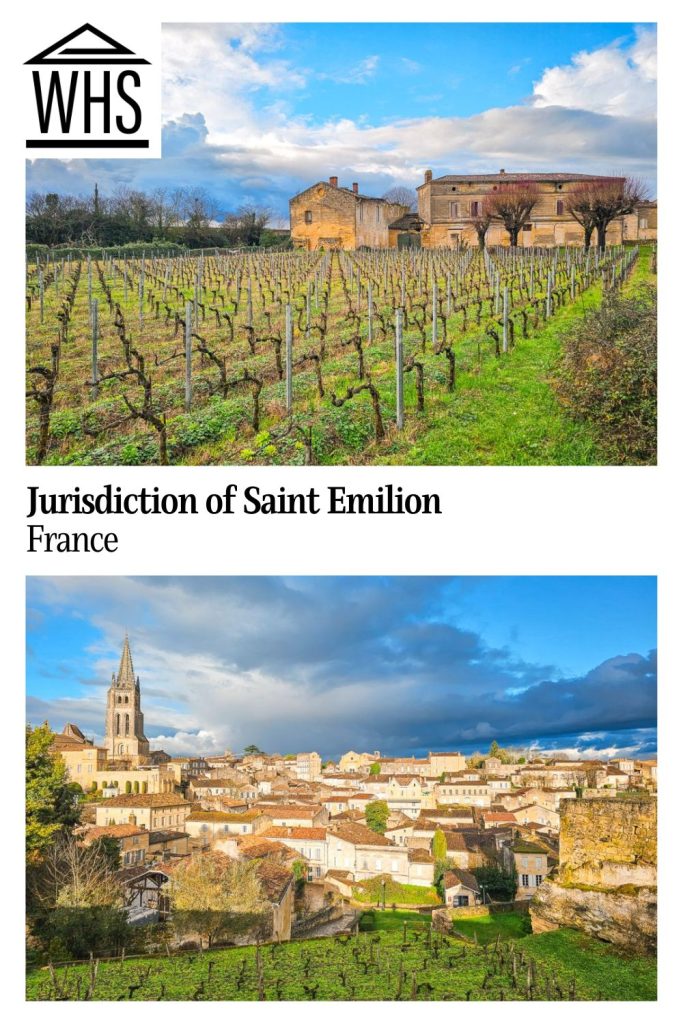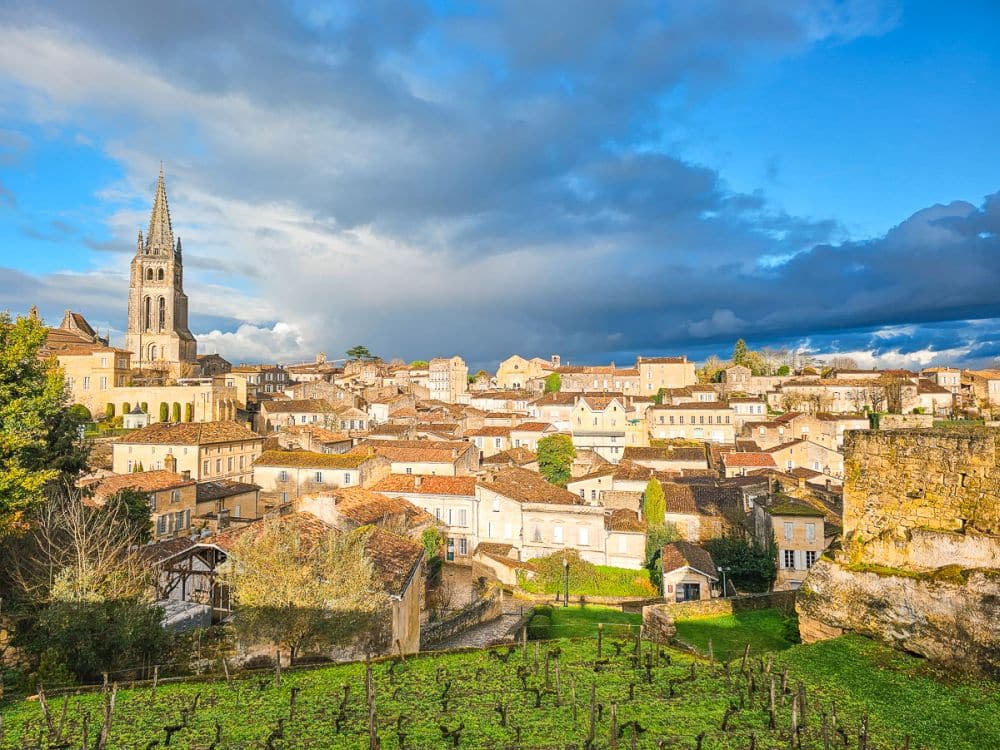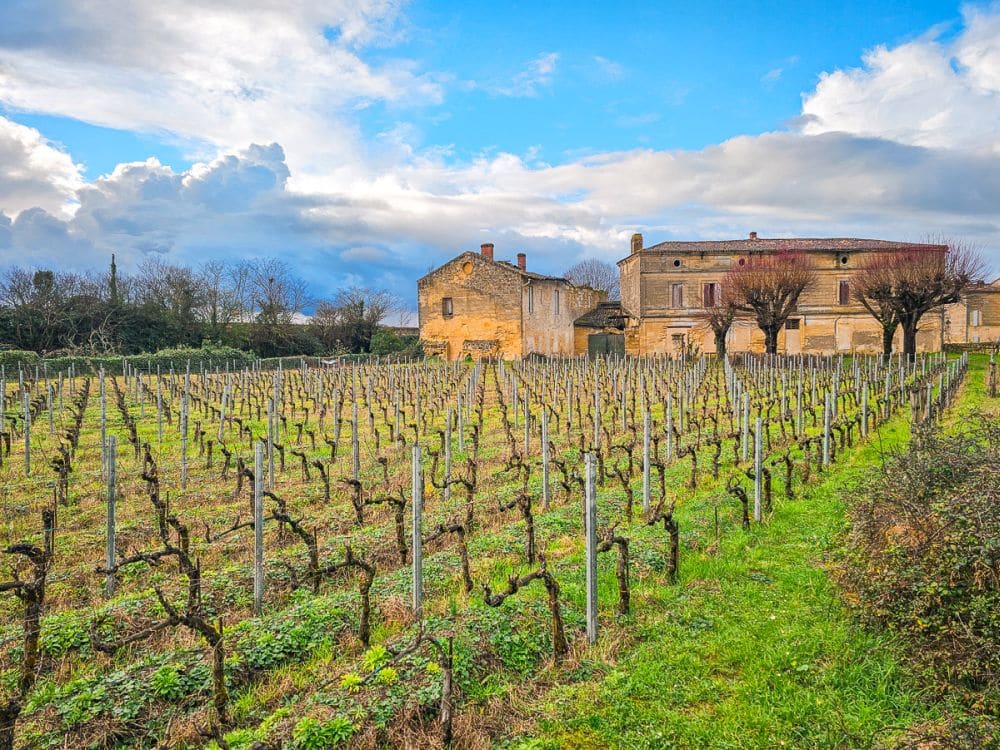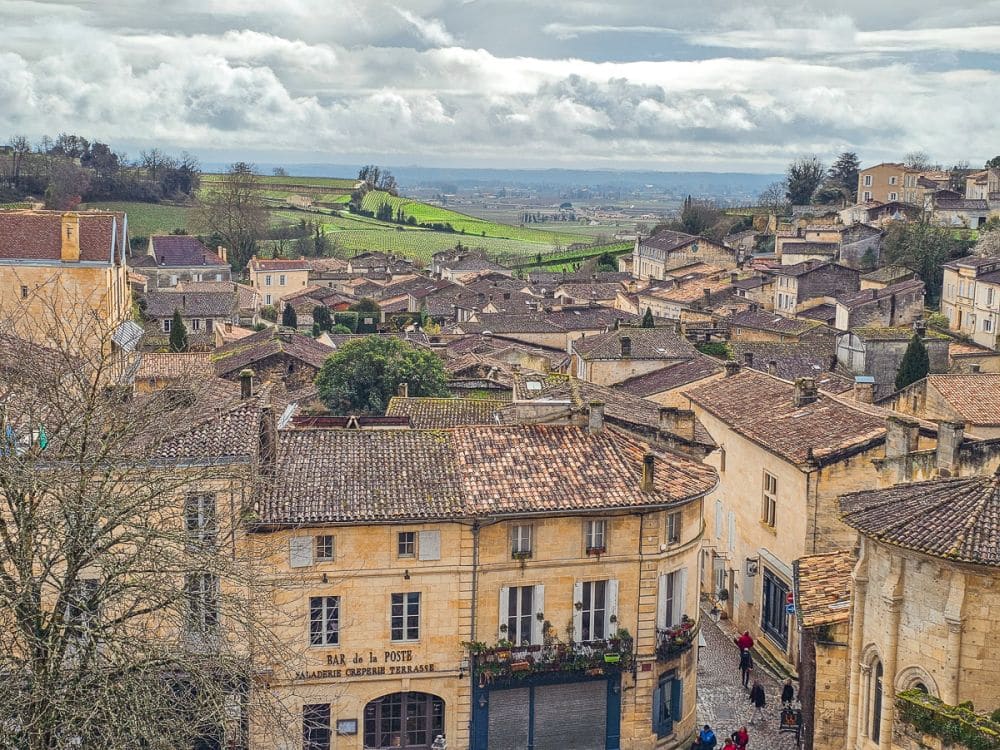Jurisdiction of Saint-Emilion
By Stephanie Rytting
What is the Jurisdiction of Saint-Emilion?
Saint-Emilion is an area of idyllic vineyards and a center of wine production in southwest France. It encompasses a small village (Saint-Emilion) and seven other nearby communes, as well as the surrounding countryside filled with numerous vineyards.
Disclosure: This article contains affiliate links. Making a purchase through an affiliate link will mean a small commission for this website. This will not affect your price.

Why is Saint-Emilion a UNESCO World Heritage site?
Saint-Emilion earned its spot on the UNESCO list thanks to its long history with viticulture (wine production), dating back to Roman times, when the Romans introduced grape vines to the region. Wine production really increased during the Middle Ages and has continued to be the dominant economy of the area today.
The wine economy shaped the region considerably, with the landscapes and the towns all created around this wine heritage. For example, during the Middle Ages and Renaissance, castles (chateaux) were built in the area, but later (18th-19th centuries) chateaux were located in the center of the vineyard domains to be able to best care for and protect the vineyards. Today, these chateaux dot the countryside, surrounded by rows and rows of vines.
Additionally, the village of Saint-Emilion is a notable religious and pilgrimage site. A monk called Emilion lived in a cave in the village during the Middle Ages, serving the people, and was reported to have performed several miracles. The village is also the home of a massive monolithic church (i.e. carved out of a limestone hillside): the largest monolithic church in Europe. Its location on the Santiago de Compostela pilgrimage route also contributes to making the village of Saint-Emilion a popular pilgrimage stop.

What can you expect on a visit to Saint-Emilion?
The Saint-Emilion area is incredibly charming and Saint-Emilion is a delightful village to visit. The Old Town is full of cobblestoned streets, medieval buildings, and wine shops. There is an upper and lower town, with great views over the village from the upper town. You can visit the Church Bell Tower or the Tower of the King for more panoramic views over the countryside.
The notable religious buildings to visit in town include the Collegiate Church and its cloister, the Monolithic Church, and the Grotto of Saint-Emilion. The Cordeliers Cloister is unique in that in the 1800s it was converted into a wine cellar. Today, you can visit the underground wine cellar, browse the collection in the historic church, or wander the garden ruins.
The allegedly-first bakery to produce the original macaron is located in Saint-Emilion, and these traditional macarons are notably different than the typical sandwich cookies common throughout France.
Take just five steps outside of the village and you are suddenly surrounded by the most picturesque landscape of vineyards, punctuated by pretty chateaux. You can walk, bike, or drive down these country roads, admiring the beautiful landscapes. Many chateaux in the countryside are open for tours and wine tastings, and tasting your way around the Saint-Emilion countryside is a very popular activity.
Try this small-group day tour to see Saint-Emilion and taste some wines!

Is the Jurisdiction of Saint-Emilion worth visiting?
I definitely think Saint-Emilion is worth visiting – it’s truly an enchanting French village. It’s very easy to do a day trip to Saint-Emilion from Bordeaux or even Toulouse, and is thus very easy to work into a southern France itinerary. I would certainly make this a priority when visiting the southwest France region.
While most people do Saint-Emilion as a day trip, you could also spend several days in the area and stay at a chateau, relax in the countryside, and visit many vineyards. Use the map below to find your accommodations:
What sorts of travelers would like Saint-Emilion?
Saint-Emilion would especially suit travelers who enjoy wine tastings, but even if you don’t drink (or are traveling with children), there is enough to see and do around Saint-Emilion to entertain anyone who enjoys charming European villages.

Tips for visiting Saint-Emilion
You can visit any time of year, but during winter the vines are dormant, and fall is usually a very busy time for harvesting the grapes.
It is only possible to visit the Monolithic Church with a guided tour – you can reserve online or at the tourism office.
If you want to do a lot of wine tasting, consider a guided tour (so you don’t have to worry about drinking and driving or a designated driver). Click on the images below for plenty of options:
There are many other UNESCO sites in France worth considering as you plan your trip.
Where is the Jurisdiction of Saint-Emilion?
Saint-Emilion is located in southeastern France, not far from the Atlantic Coast. It is in the Nouvelle Aquitaine region and in the Gironde department of France.
It is a 45-minute drive (48 km / 30 mi) from Bordeaux. There are several parking lots on the edges of the village. Compare rental car prices here.
You can also take the train from Bordeaux. This costs about €7 and takes 30 minutes, with departures every 30-60 minutes throughout the day.
For more information about Saint-Emilion, its opening hours and admission fees, see its official website.
Have you been to Saint-Emilion? If so, do you have any additional information or advice about this UNESCO World Heritage site? Please add your comments below!

